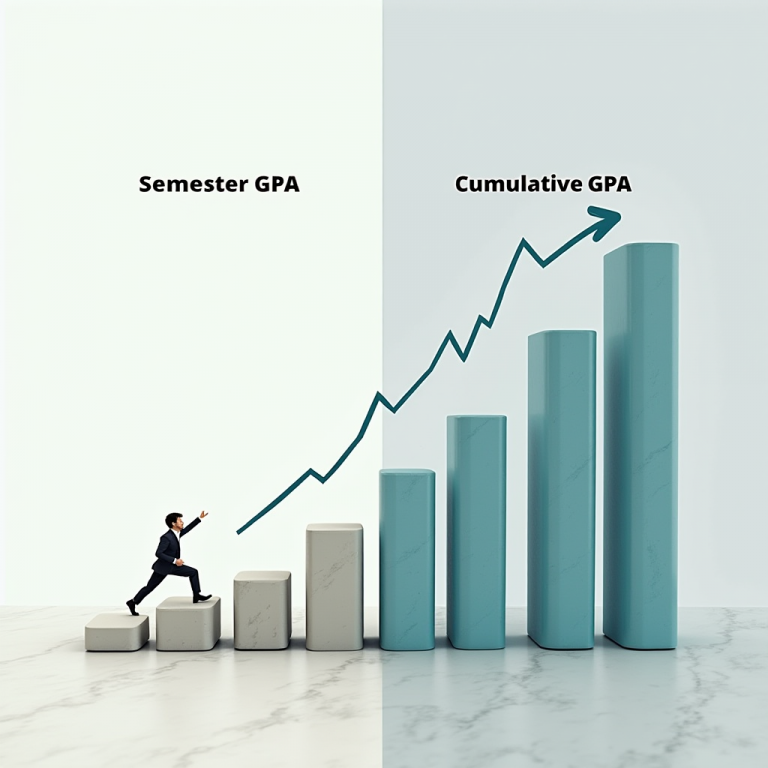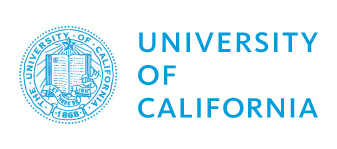Mastering High School GPA: How Is GPA Calculated in High School
Understanding how high school GPA, also known as a grade point average, is calculated is crucial for academic success and future opportunities. As an accredited online high school, Silicon Valley High School (SVHS) provides flexible learning options while maintaining rigorous academic standards that contribute to strong GPA outcomes.
This comprehensive guide explores every aspect of GPA calculation, from basic concepts to advanced considerations, helping students navigate their academic journey effectively. By understanding the nuances of GPA calculation, students can strategically plan their courses and maximize their academic potential. Ultimately, this knowledge empowers students to make informed decisions that enhance their educational experience and supports the college admissions process by clarifying expectations of grades.
How High School GPA is Calculated
High school GPA calculation involves converting each letter grade into numerical values and averaging them across all your classes. The process typically follows a grading scale where each letter grade corresponds to a specific point. For a standard unweighted GPA like that used at SVHS, an A equals 4.0 points, B equals 3.0, C equals 2.0, and so on. Some students use a high school gpa calculator to quickly add semester data, track quarter gpa, and compare grades received each grading period.
This ensures a grades based approach that reflects actual performance. By consistently monitoring school gpa, students can plan effectively for success. For instance, each letter grade influences your final high school GPA, as grade points accumulate over the current semester to reflect real-time progress and track your overall grades.

Understanding GPA Basics
Grade Point Average (GPA) serves as a standardized measure of academic performance throughout high school. It represents the average value of final grades across subjects over time. This metric is vital in the college admissions process, as well as in scholarship opportunities and future employment prospects.
Weighted and unweighted GPAs differ in how they incorporate the rigor of honors classes or an AP class. An unweighted scale uses a standard 4.0 format, while a weighted scale can yield a higher weighted gpa for more challenging coursework. By pursuing a good gpa on both scales and monitoring grades regularly, students strengthen their high school career prospects. In many cases, failing to keep up with daily assignments can lead to a lower gpa, highlighting the importance of consistency in every letter grade.
Unweighted GPA Calculation
Calculating an unweighted GPA follows a straightforward process. Each letter grade is assigned a numerical value: A (4.0), B (3.0), C (2.0), D (1.0), and F (0.0). This unweighted scale treats regular classes equally, regardless of difficulty. To calculate high school gpa on this scale, multiply each course’s grade points by its credit hours (or class credits), sum these values, and then divide by the total.
SVHS’s self-paced approach enables students to focus on understanding course material thoroughly, improving their grades. This fair method ensures a clear reflection of academic efforts and helps students see the true impact of their unweighted GPA. Emphasizing a strong unweighted GPA can prepare students for various colleges that often focus on consistent performance. Additionally, unweighted GPA often reflects how well a student masters core concepts without extra weighting from advanced classes. While SVHS does not provide IB courses, many schools factor them into unweighted GPA calculations differently.

Weighted GPA Calculation
Weighted GPA calculations account for the added difficulty of harder classes, such as honors classes or an AP class, by assigning extra grade points. This weighted gpa system often uses a weighted gpa scale or weighted scale to accurately measure advanced placement workloads, resulting in a stronger weighted GPA for students who excel in advanced level course offerings. On a weighted gpa scale—a popular weighted scale model—an A in an AP class might earn 5.0 points, while an A in honors classes might earn 4.5. In some cases, a weighted scale can differ significantly from an unweighted scale, providing more recognition for advanced courses.
Though SVHS does not offer AP courses or official honors courses, its UC-approved A-G curriculum is rigorous, ensuring students can still cultivate a competitive weighted GPA. For many colleges, a student’s weighted GPA is a key factor, though some institutions recalculate weighted GPA based on their own criteria. Understanding how to calculate weighted gpa helps students strategically select honors courses or challenging classes, thereby improving their weighted GPA further. Even though an ap course can boost Weighted GPA in many schools, remember that SVHS does not currently offer this option. Students aiming for a top grade in advanced classes may rely on Weighted GPA metrics to highlight exceptional achievements. Because many colleges reevaluate your weighted GPA, consistently performing at a high level can stand out significantly. Ultimately, selective colleges often examine both unweighted GPA and Weighted GPA to gain a full picture of your academic capabilities, demonstrating consistent improvements in weighted GPA to stand out in scholarship applications.
Semester and Cumulative GPA
Semester GPA reflects a student’s performance during a single term, capturing the grades earned in that period. By calculating semester gpa, students can monitor fluctuations in their school gpa and identify areas needing improvement.
Meanwhile, a cumulative GPA encompasses all the grades across multiple terms. SVHS’s flexible scheduling allows learners to balance responsibilities, maintain strong grades, and support steady progress in their high school career. Understanding both semester and cumulative GPAs helps students set realistic goals, maintain a good gpa, and plan effectively for future academic endeavors. Monitoring your cumulative GPA and regularly reviewing your grades helps you maintain an overall GPA that attracts attention from prospective colleges, especially if you plan to enroll in honors courses to showcase academic diligence.

GPA Scales and Variations
Different schools employ a variety of GPA scales, typically anchored around a 4.0 grading scale. Some institutions adopt a 5.0 or 6.0 gpa scale to acknowledge weighted courses, while others rely on a standard 4.0 framework for regular classes. Because not every specific school calculates the same gpa, many colleges recalculate grades to maintain consistency in admissions.
SVHS’s approach aligns with widely recognized practices, ensuring that students’ achievements are accurately represented on a high school transcript. Many high school students wonder how their unweighted GPA compares across different schools. Since colleges often look at grades from each term, keeping track of both unweighted and weighted calculations remains crucial. A consistent record of strong grades, particularly from each high school course, strengthens applications to various colleges, increasing opportunities for scholarships or a higher gpa.
Tools and Resources for GPA Calculation
Numerous online tools can help students report grades, track course grades, and compare different gpa scale methods. SVHS’s student dashboard offers a user-friendly layout that shows updated grades, making it easier to manage time and maintain a good standing.
These tools also clarify how different GPA scale conversions might affect course planning. By leveraging these resources, students can see how each assignment impacts their overall performance and quickly adjust their study strategies.
Impact of GPA on College Admission
College admissions officers value GPA as a core metric, but they also consider factors like course rigor and consistency of grades across each semester. A lower gpa earned during the first semester, followed by improvement later on, can reflect positive growth. Many colleges also value an AP class or honors course path during high school to gauge academic ambition.
Because most colleges recalculate GPAs, a strong record can enhance a college application. SVHS’s accreditation ensures that transcripts meet recognized standards, boosting acceptance odds. Even if a student experiences fluctuations in grades during high school, aiming to rectify any weaker marks can help maintain a competitive record.
Frequently Asked Questions About GPA
Common questions include how course grades from freshman year affect cumulative GPA, the impact of an AP class on weighted GPA, and whether class rank significantly influences the college application process. Additionally, there’s confusion on whether all the grades from freshman year carry equal weight, or if certain terms are excluded. In truth, policies vary among colleges, and calculating GPAs can differ by region or institution.
SVHS’s FAQ page addresses these and other concerns regarding transcripts, credits, and academic requirements. By exploring these details, students gain clarity on how grades contribute to their overall record, ensuring informed decisions that support future plans. For any questions about final grades or how advanced coursework might affect your transcript, consult SVHS’s FAQ page.

Historical Changes in GPA Policies
Over time, schools have modified how they evaluate grades, shifting from purely unweighted models to systems that recognize advanced coursework. These changes align with evolving college requirements and highlight the importance of a robust academic record.
SVHS regularly reviews its policies to ensure grades are represented accurately, reflecting best practices in online education.
GPA and Financial Aid Opportunities
A strong GPA often unlocks merit-based scholarships offered by colleges. Maintaining consistently high grades can reduce tuition costs through academic awards.
SVHS’s approach helps students build the skills needed for success in college and beyond, increasing eligibility for numerous financial relief options.

Improving Your GPA: Tips and Strategies
Study habits, time management, and consistent attention to grade credits are crucial for boosting GPA. By reviewing course grades regularly and seeking help, students can raise their academic standing steadily.
SVHS’s self-paced model supports individualized learning, allowing deeper comprehension and better grades. Implementing these strategies can help transform a struggling record into a track toward success.

GPA and Career Opportunities
While some industries emphasize specific skills, many employers see strong grades as reliable indicators of diligence. Although colleges remain a common path after high school, the ability to highlight academic achievements and sufficient grade credits in a college application or résumé can open doors.
SVHS’s curriculum fosters both subject mastery and skill development, ensuring students present a well-rounded profile to future employers.
GPA Exclusions and Optional Policies
Some institutions permit exclusions for non-core subjects, enabling students to focus on critical grades. This can be particularly useful if certain classes do not align with academic or career goals.
SVHS’s academic advisors guide learners through these policies to preserve transparency while showcasing their strongest achievements.
GPA and Student Well-being
Balancing academic performance and mental health is essential. Excessive focus on grades can lead to burnout, so students should practice healthy habits like regular breaks and organized schedules.
SVHS’s flexible format supports a balanced lifestyle, ensuring a stable path to academic success without compromising well-being.
GPA in the Context of International Education
In international contexts, grading systems vary widely, making direct comparisons of first semester performance challenging. Many universities apply conversion formulas to interpret official records accurately.
SVHS’s International Dual Diploma Program eases this transition, helping students align their achievements to U.S. standards.
The Future of GPA in Education
Educational assessment continues to evolve, with some colleges and universities exploring holistic reviews and competency-based evaluations.
SVHS remains responsive to these changes, updating its programs to reflect emerging trends in measuring academic success, beyond the traditional GPA.
Case Studies: GPA Success Stories
Success stories highlight how students improved their grades through structured study, timely feedback, and well-chosen courses. One SVHS learner boosted their GPA substantially by identifying weaknesses early and dedicating extra time to critical subjects.
Another balanced a demanding schedule while consistently raising marks, proving that with dedication and strategy, academic goals can be achieved.

GPA Myths and Misconceptions
One myth suggests that students must take six classes every term to maintain a competitive GPA, which is not always true. Another misconception is that only final marks matter, overlooking trends or improvements over time.
SVHS’s advisors clarify these misunderstandings, helping students focus on consistent progress.
GPA and Extracurricular Activities
Admissions committees at many colleges appreciate students who balance academics with extracurriculars. By efficiently managing time and obligations, learners can maintain strong performance while cultivating broader interests.
SVHS’s flexible model supports active engagement in outside pursuits, boosting an individual’s appeal to both colleges and future employers.
Conclusion and Final Thoughts
Understanding GPA calculation remains crucial for informed academic decisions. Tracking semester gpa and cumulative progress helps students identify areas for improvement and maintain a strong record for college or career pursuits.
Ensuring consistent performance throughout high school sets a solid foundation. SVHS’s accredited programs provide flexibility and rigor, ensuring learners can merge personal development with academic achievement. By embracing this comprehensive perspective, students pave the way for future success.























